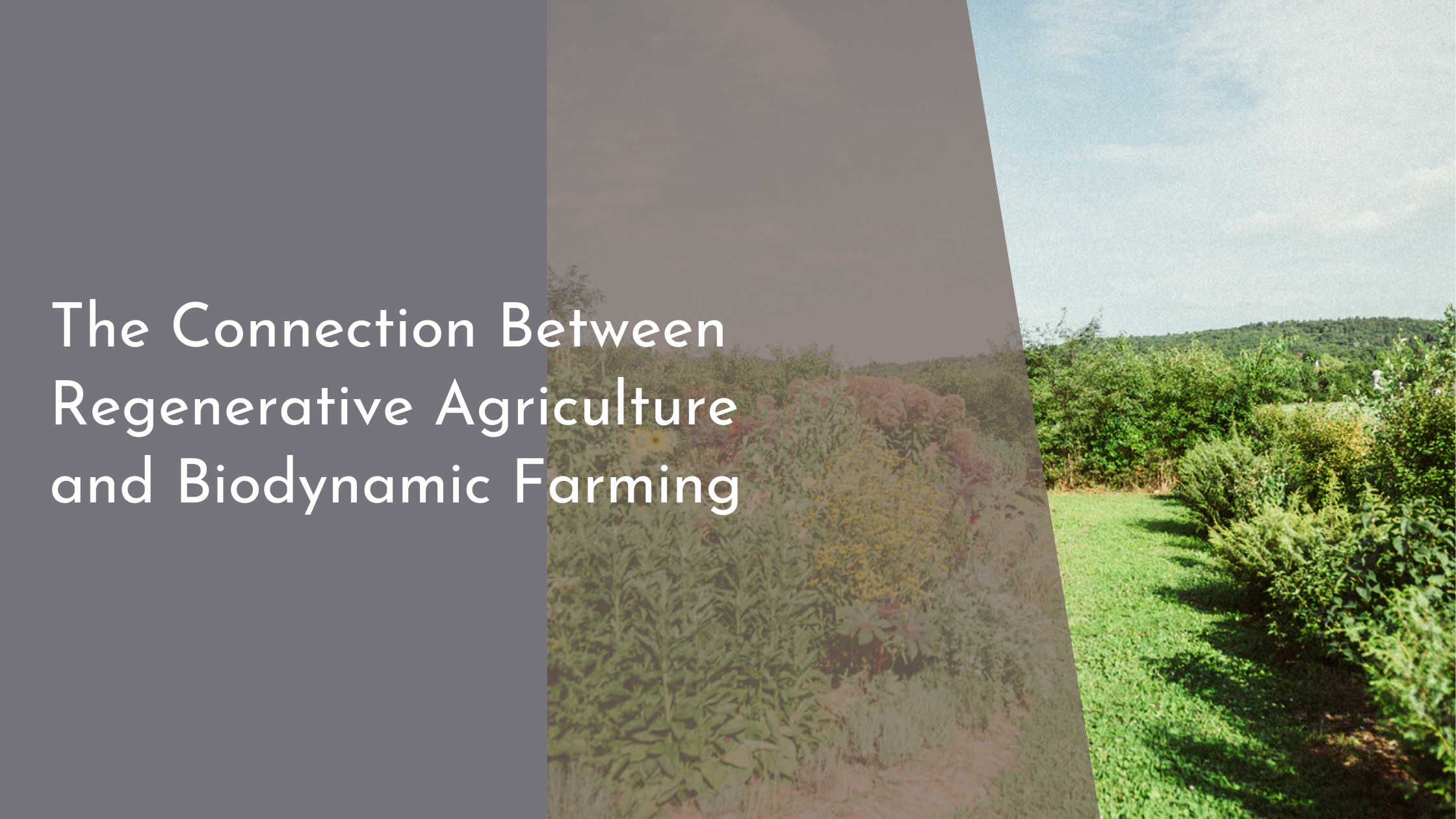The Connection Between Regenerative Agriculture and Biodynamic Farming
In recent years, sustainable farming practices have become a beacon for transforming the agricultural industry, promising healthier soils and ecosystems. Among these innovative approaches, regenerative agriculture and biodynamic farming stand out as leaders in the movement. These methodologies not only focus on agricultural productivity but also emphasize the importance of nurturing the environment. In this exploration, we’ll delve into the basics of regenerative agriculture, uncover the principles of biodynamic farming, discover the commonalities between these approaches, and look ahead to the promising future of sustainable farming.
Understanding Regenerative Agriculture Basics
Regenerative agriculture is an approach that goes beyond mere sustainability, aiming to restore and enhance the ecosystem within which farming occurs. At its core, this method focuses on improving soil health and increasing biodiversity to create robust, resilient agricultural systems. Practices common in regenerative agriculture include cover cropping, reduced tillage, and maintaining a diverse crop rotation. These techniques work collectively to improve soil structure, enhance water retention, and sequester carbon, reducing the overall carbon footprint of farming activities.
A significant facet of regenerative agriculture is its focus on the holistic management of land and livestock. By integrating livestock into cropping systems through practices like rotational grazing, farmers can mimic natural ecosystems, promoting nutrient cycling and reducing the need for synthetic fertilizers. This integration helps create a balanced ecosystem where plants and animals thrive symbiotically, resulting in increased productivity and improved environmental outcomes. Regenerative agriculture’s emphasis on synergy between farming practices and ecological health is a key component of its growing popularity among farmers aiming for sustainability.
Principles and Practices of Biodynamic Farming
Biodynamic farming, founded by Rudolf Steiner in the early 20th century, is a holistic agricultural approach that treats the farm as a self-sustaining organism. This method incorporates organic farming techniques while adding unique elements like lunar and astrological planting calendars and the use of specific herbal and mineral preparations. These preparations are intended to enhance soil fertility and plant health, contributing to a balanced farm ecosystem that can sustain itself over time. The central philosophy of biodynamic farming is to work with nature’s rhythms, fostering the vitality and resilience of the farm as a whole.
Key practices in biodynamic farming include composting, crop diversification, and the integration of livestock, similar to regenerative agriculture. However, biodynamics places a strong emphasis on the spiritual and cosmic dimensions of farming, with rituals and preparations designed to align agricultural practices with the broader forces of nature. This holistic approach encourages farmers to be observant and adaptive, responding to the unique needs of their land while maintaining ecological harmony. By fostering a deeper connection to the natural environment, biodynamic farming aims to create thriving, self-sufficient farms.
Exploring Common Ground Between These Methods
Both regenerative agriculture and biodynamic farming share a commitment to improving soil health and promoting biodiversity. These practices recognize the importance of healthy soil as the foundation for productive and sustainable farming. By prioritizing soil improvement techniques, both methods aim to increase organic matter content, enhance nutrient cycling, and support diverse microbial life. This focus on soil vitality not only boosts crop yields but also plays a critical role in combating climate change by sequestering carbon.
Another significant commonality is their holistic approach to farm management. Regenerative and biodynamic methods emphasize the integration of crops and livestock, fostering a balanced and self-sustaining ecosystem. Both systems seek to minimize reliance on chemical inputs and instead encourage natural processes to maintain soil and plant health. This shared ethos of working in harmony with nature, rather than against it, empowers farmers to create more resilient agricultural systems capable of withstanding environmental challenges and contributing to a healthier planet.
The Future of Sustainable Farming Practices
As awareness of the environmental impacts of conventional agriculture grows, regenerative agriculture and biodynamic farming offer promising alternatives. These methods not only enhance farm productivity but also contribute to broader ecological benefits like carbon sequestration, water conservation, and habitat restoration. With continued research and innovation, these practices will likely play an increasingly significant role in shaping the future of agriculture, offering solutions to some of the most pressing global challenges, including climate change and food security.
The future of sustainable farming may well see regenerative and biodynamic methods at the forefront of a major agricultural transformation. As more farmers adopt these practices and witness their benefits first-hand, they will likely inspire further innovations and adaptations, tailored to diverse climates and ecosystems around the world. By fostering ecosystems that are both productive and ecologically aligned, these practices hold the promise of a more sustainable and resilient agricultural future, capable of nourishing both people and the planet for generations to come.
In conclusion, regenerative agriculture and biodynamic farming provide compelling models for creating sustainable and resilient farming systems. By prioritizing soil health, biodiversity, and ecological harmony, these practices offer a path toward more sustainable food production. As we look to the future, embracing these innovative approaches can help ensure that agriculture remains a positive force for ecological restoration and climate resilience. Whether you are a farmer, a consumer, or an advocate for environmental sustainability, understanding and supporting these practices can contribute to a healthier and more sustainable world.

